WAR GRAVE
DUDLEY D. SNOOKE (grave 31)
SERGEANT
83 SQUADRON
ABOUT MY LIFE
Born: 1920
Died: 28th September 1940
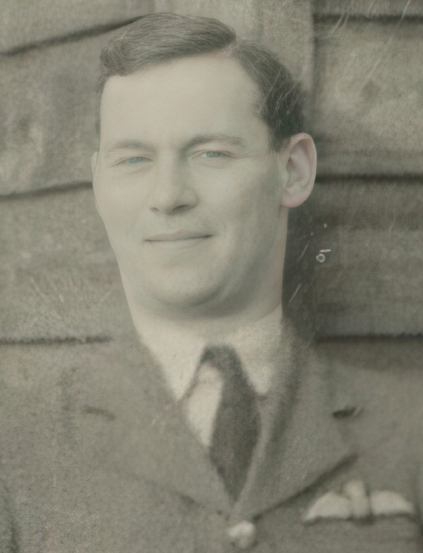
I grew-up in Pretoria, South Africa, where I attended the Waterkloof House Preparatory School. The motto of the school is “Work Hard, Play Straight”. I spent six years at this school and I was known for my passion for flying and devouring my monthly copy of “The Aeroplane” magazine. I matriculated in 1938 and headed straight for England to join the RAF before the war started. I had departed the Port of Durban aboard the SS Winchester Castle, arriving in Southampton 28th April 1939.
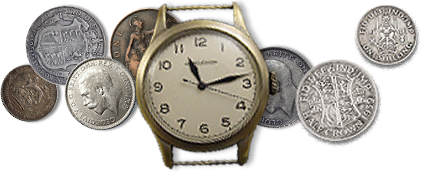
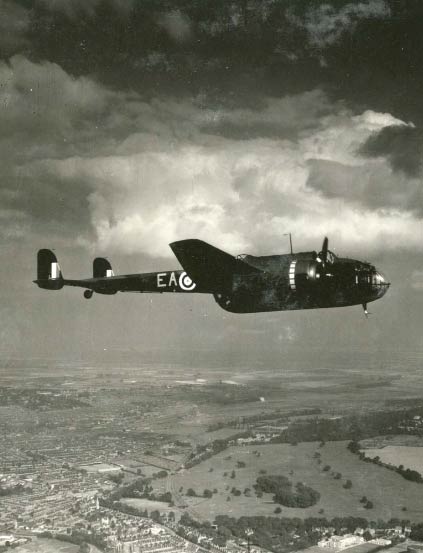
MY AIRCRAFT
The Hampden was a medium bomber with a crew of 4. Pilot, Navigator, Wireless Operator/gunner and a further gunner. Although it was a vast improvement on the biplanes 83 Squadron had been flying just before the war opened, in reality it was already obsolete. Early daylight raids had been a disaster, the bomber was too slow to evade German fighters and its guns were no match for the Germans either. The distinctive fuselage, designed to give the aircraft a sleek, aerodynamic profile, led to the Hampden earning its nickname of “The Flying suitcase”.
Crew: 4
Span: 21.09 m
Length: 16.32 m
Height: 4.37 m
Wing area: 63.90 m²
Empty weight: 5,344 kg
Loaded weight: 8,508 kg
Engine: 2 x Bristol Pegasus XVIII 9-cylinder radial engines
Engine power: 980hp each
Maximum speed: 410 km/h
Rate of climb: 5.00 m/s
Range normal: 1,095 km
4 or 6 x 7.7mm Vickers K machine guns (1 flexible, 1 nose, 1 or 2 dorsal, 1 or 2 ventral)
1,814kg of bombs/mines or 1 x 18in torpedo
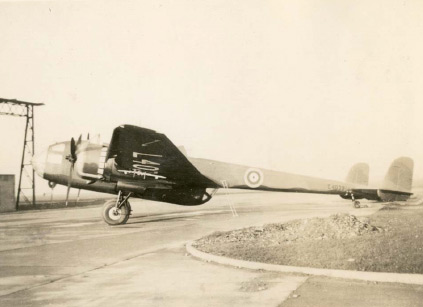
MY ROLE
I was the pilot and captain of this aircraft, part of this role was trying to ensure the safety of my crew. On the night of the accident, I stayed at the controls to give my crew time to escape by parachute, but in doing so, there was not enough time to save my own life.
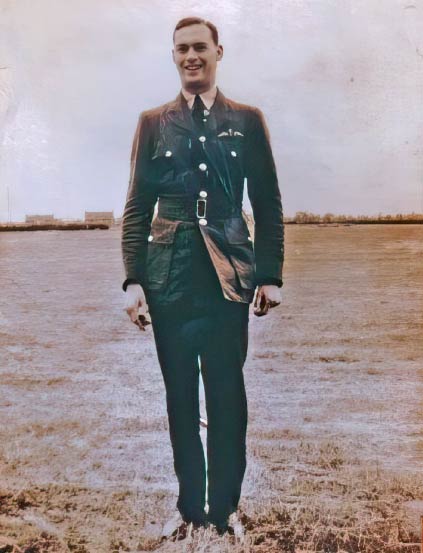
MY SQUADRON
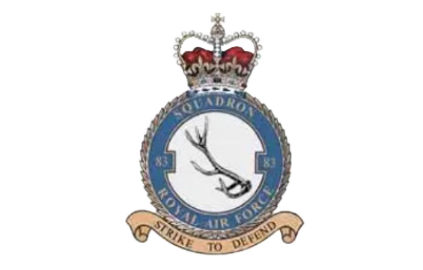
Motto: Strike to Defend
83 Squadron was formed at Montrose on 7th January 1917 as a night bomber squadron. Moving to France in March 1918, the squadron saw action on the western Front and took part in operations to counter the German’s Spring Offensive. Following the end of the war, the Squadron was disbanded on 31 December 1919.
With the threat of war once again looming over Europe, 83 squadron was reformed at RAF Turnhouse on 4th August 1936, flying the Hawker Hind biplane. In March 1938, the squadron re-equipped with Handley Page Hampdens at RAF Scampton.
In the summer of 1940, the Squadron received one of Scampton’s three Victoria Crosses due to the heroic actions of Flight Sergeant John Hannah in putting out the fire on a battle damaged Hampden.
In December 1941, the squadron re-equipped with the infamous Avro Manchester, but the poor reliability of this aircraft led to them quickly being re-equipped with the legendary Avro Lancaster, with which the squadron fought the rest of the war. In August 1942, the squadron became a pathfinder unit, leading large bomber formations to their targets and laying target indicator flares so they could be more accurately hit.
After the war, they flew Avro Lincolns and Avro Vulcans, before being disbanded in 1969.
THE ACCIDENT
My mission was to take our 83 Squadron Hampden to Lorient in France and attack the U-Boat pens there. Although it was still early in the war, I knew only too well that Hitler’s U-Boats were going to be a major threat. An island nation could not last long if the sea-lanes around it were infested with the Reich’s silent killers.
In total, twelve aircraft were dispatched to Lorient of which nine located and attacked their target. It is thought that I was one of those who had not found the target and returned with my bombs still on board.
Arriving back over Lincolnshire in the early hours of Saturday 28th September 1940 I and my crew were unable to locate the airfield at Scampton. Running desperately short of fuel, at 3:50am I ordered the aircraft to be abandoned.
My crew parachuted to safety, but I was not so lucky. Reports vary, but my parachute either became entangled with the doomed aircraft or I became impaled on railings on landing. In any case, my body was found a short distance from the crash site at Saint Mathias Church on the corner of Burton Road and Yarborough Crescent in Lincoln.
Contemporary reports indicate that the aircraft’s impact caused a large explosion, which woke most of Lincoln. The church was extensively damaged, evidence of which can still be seen today. The survivors from the aircraft were Pilot Officer Eric Clarke, Pilot Officer Charles Laurence Turner and Sergeant Kenneth McKenzie.
Personal account by John Benson c/o BBC People’s Memories:
In 1940 I was 11 years old when in the early hours of Saturday morning 28th September I awoke to the sound of a terrific crash, followed by machine gun bullets going off. We had an army officer billeted on us but he had been called for duty that night at nearby Lincoln barracks because Hitler’s invasion was expected imminently.
My first thoughts were that the Germans HAD landed and were coming down Yarborough Crescent but were being held up by men in the trenches which had been dug at the corner of Burton Road. My parents came into the front bedroom which I shared with my younger brother – they thought that the house had been hit. They drew the blackout curtains and we saw that a Hampden bomber had crashed into St Matthias church opposite our house. There was a terrific blaze and machine gun bullets were popping off in the fire.
My father rang the fire brigade and I went downstairs to the back room (to be out of the way of the machine gun bullets), had a cup of tea and then fell asleep again.
The next morning I went to school as usual (we went to school on Saturday mornings in those days) and was somewhat surprised to find that the sound of the crash had awoken most of Lincoln. I went home at lunchtime to find that the area had been cordoned off and that the local residents had been told to go to air raid shelters. Apparently the Hampden had returned from a raid on U-boat bases at Lorient in France with a bomb still on board – and it was still there in the wreckage! Fortunately it was soon dealt with. Later that day I found remnants of ammunition belts – still with live ammunition – at the bottom of our hedge, but to my intense disappointment the RAF came and took them away.
The south side of St Matthias church, including the vestry, was destroyed, but it was patched up with corrugated iron until the damage was repaired after the war. It continued to be used every week by the soldiers at the barracks for their Sunday morning church parades.
The Hampden was from 83 Squadron, based at nearby RAF Scampton (later to become famous as the home of the “Dambusters”.) It had flown home on one engine and had probably still got quite a large amount of high-octane fuel on board. The crew of four had baled out, but the pilot – Pilot Officer Dudley Snook (20) probably left it too late. His parachute failed to open and he landed less than 100 yards away from the crash. He is buried in the churchyard at Scampton. The air gunner later became a pilot and he survived the war.
Where Next
Visit the memorial to Pilot Officer Snooke, close to the crash site: On school premises (But can easily be seen from the street). If closer access is required – call 01522 528308 Westgate Academy, Westgate, Whitton Park, Lincoln, Lincolnshire. LN1 3BQ England
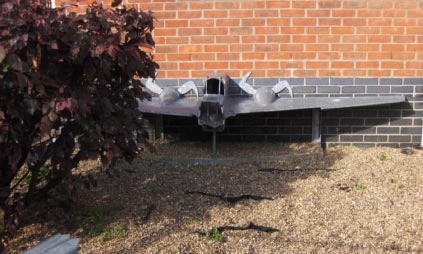
ON THIS DAY IN WORLD WAR TWO – 28TH SEPTEMBER 1940
Hitler secretly orders the German economy to be mobilised towards an invasion of Russia.
The first of 50 old American destroyers arrive in the UK.
The Nazis appoint the Norwegian traitor Vidkun Quisling as leader of Norway.
